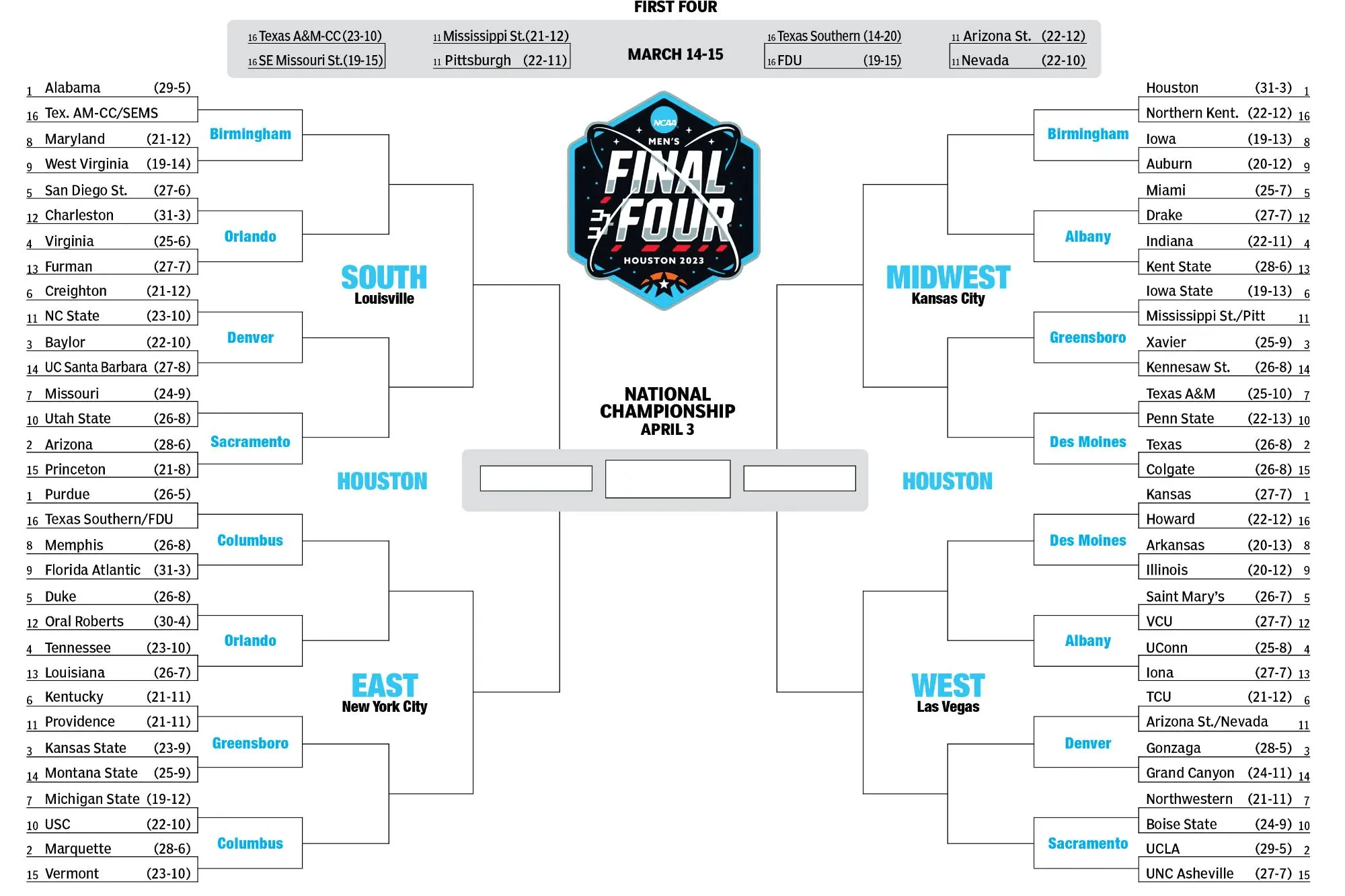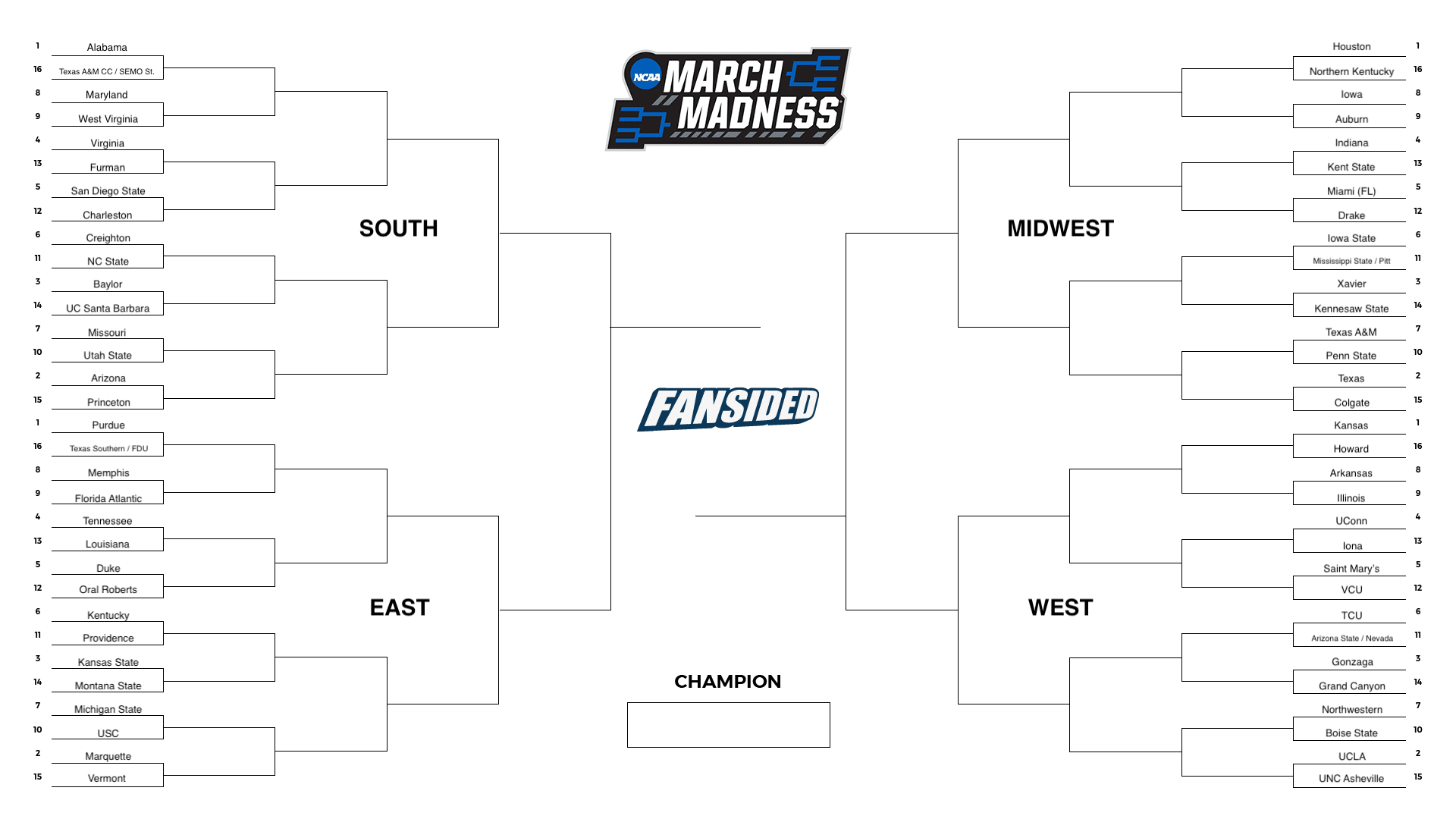Men's March Madness is one of the most thrilling and widely watched sports events in the United States. Every year, millions of fans tune in to watch the best college basketball teams compete for the national championship. This tournament is not just about basketball; it's a cultural phenomenon that brings people together, creating unforgettable moments and unforgettable memories.
As the name suggests, March Madness takes place during the month of March, culminating in the championship game in early April. The tournament features 68 teams from across the country, with each game filled with high-stakes drama, upsets, and nail-biting finishes. For basketball enthusiasts, it's a month-long celebration of the sport.
This article will take you on a deep dive into the world of Men's March Madness. From its history and key players to strategies, predictions, and fan engagement, we’ll cover everything you need to know about this iconic event. Whether you’re a die-hard fan or a newcomer to college basketball, this guide will help you appreciate the magic of March Madness.
Read also:Savannah Guthrie Political Views A Comprehensive Analysis
Table of Contents
- The History of Men's March Madness
- Structure of the Tournament
- Key Players and Coaches
- The Thrill of Upsets
- Fan Engagement and Bracketology
- Economic Impact of March Madness
- Media Coverage and Broadcasting
- Controversies Surrounding March Madness
- Future Trends and Innovations
- Conclusion
The History of Men's March Madness
The Men's March Madness tournament has a rich history that dates back to 1939 when the first NCAA Men's Basketball Tournament was held. Created by the National Association of Basketball Coaches, the tournament initially featured just eight teams. Over the decades, it has grown exponentially, both in size and popularity. By 1985, the tournament expanded to 64 teams, and in 2011, it was expanded further to include 68 teams, adding the "First Four" play-in games.
One of the most significant milestones in the tournament's history was the introduction of the term "March Madness" itself. The phrase was popularized by sportscaster Brent Musburger in the early 1980s, and it quickly became synonymous with the excitement and unpredictability of the tournament. Today, March Madness is a multi-billion-dollar industry, drawing millions of viewers and generating substantial revenue through broadcasting rights, sponsorships, and merchandise sales.
Evolution of the Tournament
- 1939: The first NCAA Men's Basketball Tournament with eight teams.
- 1951: Expansion to 16 teams.
- 1975: Expansion to 32 teams.
- 1980: Expansion to 48 teams.
- 1985: Expansion to 64 teams.
- 2011: Introduction of the "First Four" play-in games, bringing the total to 68 teams.
Structure of the Tournament
The structure of the Men's March Madness tournament is designed to ensure fairness and excitement. The 68 teams are divided into four regions: East, West, South, and Midwest. Each region has 16 teams seeded from 1 to 16 based on their performance during the regular season and conference tournaments. The top four seeds in each region are given automatic bids based on their conference championships, while the remaining spots are filled through at-large bids determined by a selection committee.
The tournament follows a single-elimination format, meaning that a loss means elimination. This creates a high level of tension and drama, as every game is crucial. The tournament progresses through several rounds, including the Round of 64, Round of 32, Sweet 16, Elite Eight, Final Four, and ultimately, the championship game.
Key Rounds in the Tournament
- Round of 64: The first round where all 68 teams compete.
- Round of 32: The second round where the winners from the first round face off.
- Sweet 16: The third round where the competition becomes more intense.
- Elite Eight: The fourth round where only the best teams remain.
- Final Four: The semifinal round where the top four teams compete for a spot in the championship.
- Championship Game: The ultimate showdown to determine the national champion.
Key Players and Coaches
Men's March Madness wouldn't be the same without its standout players and legendary coaches. These individuals have left an indelible mark on the tournament, contributing to its rich history and captivating storylines. From legendary coaches like John Wooden and Mike Krzyzewski to iconic players such as Michael Jordan and Magic Johnson, the tournament has been shaped by some of the greatest talents in basketball history.
Coaches play a crucial role in the success of their teams, devising strategies, motivating players, and making critical in-game decisions. Players, on the other hand, bring the excitement to the court with their skills, athleticism, and determination. Each year, new stars emerge, capturing the hearts of fans and cementing their place in March Madness lore.
Read also:David Spade Wife A Comprehensive Look Into His Personal Life And Relationships
Notable Coaches and Players
- John Wooden: Known as the "Wizard of Westwood," Wooden led UCLA to 10 NCAA championships.
- Mike Krzyzewski: "Coach K" has won five national titles with Duke University.
- Michael Jordan: Played for the University of North Carolina, where he won the NCAA championship in 1982.
- Magic Johnson: Led Michigan State to a national championship in 1979.
The Thrill of Upsets
One of the most exciting aspects of Men's March Madness is the potential for upsets. Every year, lower-seeded teams defy the odds and defeat highly favored opponents, creating some of the most memorable moments in sports history. These upsets not only shake up the tournament brackets but also add to the unpredictability and excitement of the event.
Historically, some of the biggest upsets have occurred in the early rounds, where a 16th-seeded team takes on a 1st-seeded team. While 16-over-1 upsets are rare, they do happen, and when they do, they become instant legends. Fans love rooting for the underdog, and these upsets often become the highlight of the tournament.
Famous Upsets in March Madness
- 1983: North Carolina State defeats heavily favored Houston to win the championship.
- 2018: UMBC becomes the first 16th-seeded team to defeat a 1st-seeded team (Virginia).
- 2016: Syracuse, a 10th-seeded team, reaches the Final Four.
Fan Engagement and Bracketology
Fan engagement is a crucial part of Men's March Madness. Millions of fans participate in bracket challenges, attempting to predict the outcome of every game in the tournament. Bracketology, the art and science of filling out a tournament bracket, has become a popular pastime during March Madness. Fans use a combination of statistics, team histories, and gut feelings to make their picks.
Social media platforms also play a significant role in fan engagement, allowing fans to share their predictions, discuss games, and react to the action in real-time. The NCAA and various media outlets provide resources and tools to help fans stay informed and engaged throughout the tournament.
Tips for Successful Bracketology
- Research team histories and player statistics.
- Consider recent form and momentum.
- Don't underestimate the power of upsets.
- Balance favorite teams with logical predictions.
Economic Impact of March Madness
Men's March Madness is not just a sporting event; it's a significant economic driver. The tournament generates billions of dollars in revenue through various channels, including broadcasting rights, sponsorships, ticket sales, and merchandise. In 2023, the NCAA signed a new 11-year deal with CBS and Turner Sports worth $8.8 billion, underscoring the tournament's financial importance.
Beyond the direct revenue streams, March Madness also has a broader economic impact. Cities hosting tournament games benefit from increased tourism, hotel bookings, and local spending. Additionally, businesses often experience a productivity dip during March Madness due to employees watching games at work, a phenomenon known as "March Madness productivity loss."
Media Coverage and Broadcasting
Media coverage of Men's March Madness is extensive, with networks like CBS, Turner Sports, and ESPN providing comprehensive coverage of the tournament. Fans can watch games on television, stream them online, and access additional content through social media and mobile apps. The tournament's widespread media presence ensures that fans around the world can stay connected to the action.
In addition to traditional broadcasting, digital platforms have become increasingly important for March Madness coverage. Fans can access live streams, highlights, and analysis through various apps and websites, enhancing their viewing experience and engagement with the tournament.
Controversies Surrounding March Madness
While Men's March Madness is beloved by millions, it is not without its controversies. Issues such as player compensation, amateurism rules, and the commercialization of college sports have sparked debates among fans, athletes, and stakeholders. Critics argue that college athletes, who generate significant revenue for their schools and the NCAA, should receive more compensation beyond scholarships.
Efforts to address these concerns have led to changes in NCAA policies, including the introduction of Name, Image, and Likeness (NIL) rights, allowing athletes to profit from their personal brands. However, the debate over the future of college sports continues, with many advocating for further reforms to ensure fairness and equity for all participants.
Future Trends and Innovations
As technology continues to evolve, so does the way fans experience Men's March Madness. Innovations such as virtual reality, augmented reality, and advanced analytics are transforming the tournament, offering fans new ways to engage with the games. Additionally, the expansion of streaming services and social media platforms is making it easier than ever for fans to follow the action.
In the future, we may see even more changes in how the tournament is structured, broadcasted, and consumed. The NCAA and its partners are continually exploring ways to enhance the fan experience while addressing the challenges and opportunities presented by a rapidly changing sports landscape.
Conclusion
Men's March Madness is more than just a basketball tournament; it's a cultural phenomenon that brings people together to celebrate the sport and its athletes. From its rich history and exciting structure to its economic impact and fan engagement, the tournament offers something for everyone. As we look to the future, the continued evolution of technology and policy will shape the tournament, ensuring its relevance and excitement for generations to come.
We invite you to join the conversation by leaving a comment below, sharing this article with your friends, or exploring more content on our website. Together, let's keep the spirit of March Madness alive and thriving!


